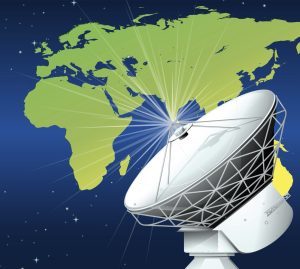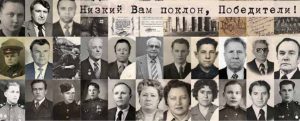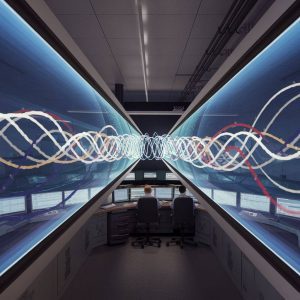Items of № 3, 2024
ANALYSIS OF THE POSSIBILITY OF IMPLEMENTING HYBRID SATELLITE SYSTEMS IN THE BANDS OF TERRESTRIAL CELLULAR NETWORKS
A.S. Pastukh, The M.I. Krivosheev Radio Research & Development Institute (NIIR), head of laboratory; apastukh@lenta.ru
O.L. Mironova, The M.I. Krivosheev Radio Research & Development Institute (NIIR), leading engineer; mironovaol@niir.ru
Keywords: WRC-23, hybrid terrestrial-satellite systems, D2D, direct-to-device, IMT, UHF-band, Monte-Carlo method.
The article considers the feasibility of utilizing hybrid satellite systems within the terrestrial IMT network bands, despite potential interference challenges from the latter. In particular, the potential interference impact from terrestrial IMT networks on the Earth-to-space link of hybrid satellite systems is assessed. The article also covers the current uses of hybrid satellite systems and shares insights from the World Radiocommunication Conference 2023, focusing on the agenda items related to new frequency bands for mobile satellite service. Based on the analysis, it is concluded that it is possible to use hybrid satellite systems within terrestrial IMT frequency bands.
USING COATINGS WITH CONTROLLED PARAMETERS FOR TRANSMITTING INFORMATION ABOUT THE STATE OF ONBOARD SATELLITE SYSTEMS
A.A. Ivanov, Saint Petersburg branch of the M.I. Krivosheev Radio Research & Development Institute – LONIIR, head of department, Ph.D.; ivanov_aa@loniir.ru
A.P. Aleshkin, Military space academy named after A.F. Mozhaisky, professor; Dr.Sci.(Tech.); vka@mil.ru
V.M. Gusakov, Military space academy named after A.F. Mozhaisky, doctoral student, Ph.D.; vka@mil.ru
Keywords: coatings with controlled parameters, passive modulator, small satellite, state.
A method is proposed for transmitting information about the state of the on-board systems of a spacecraft in the event of a malfunction of the command radio link transmitter by using a coating with a controlled resonant absorption frequency as a spatial modulator of the reflected signal, the control system of which is connected to the internal control bus. Energy calculations show the applicability of the method to LEO satellites. A mathematical model for determining the dimensions of the elements of the proposed coating and the results of modeling its reflective characteristics using electrodynamic modeling software packages are also provided.
TERRESTRIAL SDR BROADCASTING NETWORK OF DVB-T2 STANDARD
V.L. Karyakin, Povolzhskiy State University of Telecommunications and Informatics, department of radioelectronic systems, professor, IEEE member, Dr.Sci.(Tech.); vl@karyakin.ru
Keywords: regional SDR network, DVB-T2 standard, regional multiplexing center, cluster of SDR transmitters, fiber-optic channel.
The option of a regional SDR (Software Defined Radio) network of TV and radio broadcasting at the software level is considered, which allows, by optimizing its parameters, to provide the required data transmission speed, necessary stability margin, technical feasibility, and an advantage in operation costs in comparison with known technical solutions in the presence of a developed structure of terrestrial communication channels.
COMPREHENSIVE STUDY OF THE TELEGRAPH MESSAGE SWITCHBOARD
V.M. Sobol, JSC RIAA, consultant-programmer; sobolvm@yandex.ru
I.V. Udartsev, JSC RIAA, chief specialist, ntc_mob@mail.ru
Keywords: subscriber service, subscriber protocol, telecommunication complex, telegraph data exchange system, documentary exchange, virtual terminal, scripting language.
The issues of organizing the study of the telegraph switching complex of a specialized automated system are considered.The possibilities of using a hardware and software simulator that interprets the regulations of the subscriber protocol for documentary exchange are outlined. The study involves setting scenarios for autonomous and complex checks by reproducing telegraph exchange traffic. It is noted that the interpreter has become an integral tool for conducting preliminary, interdepartmental, and state tests.
THE PROBLEMS OF PROVIDING MOBILE COVERAGE OF PUBLIC HIGHWAYS AND THE POSSIBILITY OF ITS EXPANSION
A.A. Mochenov, The M.I. Krivosheev Radio Research & Development Institute (NIIR), head of laboratory; mochenov@niir.ru
Keywords: radio coverage, highways, telecommunication operators, LTE, RAN Sharing, MORAN, MOCN.
Regulatory and technical limitations are considered in providing continuous LTE mobile coverage of public highways of federal significance. The possible technological implementations of the joint use of infrastructure and radio frequency spectrum between telecom operators are analyzed.
The feasibility of using RAN Sharing technology has been assessed using the example of the Р-21 public highway.
EFFICIENCY OF USING PHOTOVOLTAIC MODULES IN VARIOUS GEOGRAPHICAL AREAS OF RUSSIA
S.I. Tynyankin, The M.I. Krivosheev Radio Research & Development Institute (NIIR), director of research center, senior researcher, Dr.Sci. (Tech.); tynyankinsi@niir.ru
I.V. Borodinov, The M.I. Krivosheev Radio Research & Development Institute (NIIR), lead specialist; borodinoviv@niir.ru
Keywords: autonomous power supply, renewable energy sources, photovoltaic module, solar energy conversion.
For the problem of autonomous power supply in telecommunication facilities, a comparative assessment of the electric power generation by photovoltaic modules, depending on the magnitude of the zenith angle of their installation has been carried out in various geographical zones of Russia. The error in predictive calculations of electric power generation by photovoltaic modules is investigated, taking into account the data obtained during their operation.
ANALYSIS OF ULTRA-HIGH RESOLUTION NEURAL NETWORK MODELS IN THE UAV VIDEO STREAM COMPRESSION SYSTEM
A.A. Berezkin, Bonch-Bruevich Saint-Petersburg State University of Telecommunications (SPbSUT), associate professor, Ph.D.; berezkin.aa@sut.ru
Phuc Hao Do, SPbSUT, postgraduate; do.hf@sut.ru
R.V. Kirichek, SPbSUT, rector, associate professor, Dr.Sci.(Tech.); kirichek@sut.ru
A.A. Zaharov, The M.I. Krivosheev Radio Research & Development Institute (NIIR), deputy general director for science, associate professor, Ph.D.; a.zaharov@niir.ru
Keywords: ESRGAN, SwinIR, diffusion models, super-resolution, unmanned systems.
This paper explores super-resolution neural networks to improve the quality of a compressed video stream from an unmanned system in first-person view (FPV). A comparative analysis of modern diffusion and generative adversarial models is carried out: the latent diffusion model (LDM), extended generative adversarial networks of overregulation (ESRGAN) and SwinIR. Using FPV control datasets, models are tuned by changing key hyperparameters. As a result of the studies, it was revealed that ESRGAN provides better performance when working in real time, but at the same time with less accuracy than SwinIR and LDM. SwinIR achieves better quality indicators due to its transformer architecture, however, the operating speed increases by 2–4 times compared to ESRGAN. LDM is comparable in quality to SwinIR, but requires 100 times more processing time.
INVESTIGATION OF 3D VIDEO STREAM TRAFFIC ON A SIMULATION MODEL
N.A. Demidov, The Bonch-Bruevich Saint-Petersburg State University of Telecommunications, postgraduate; n_demidov@sviaznoyalliance.ru
Keywords: traffic, traffic model, holographic technologies, 3D video stream traffic, 3D image traffic, data transmission.
The article highlights the results of a study of 3D video stream traffic on the basis of the developed model data transmission network. A description of the model for conducting a full-scale experiment is given, and the choice of its architecture and parameters is justified.
The data of a full-scale experiment and the results of statistical processing are presented, on the basis of which a model of threedimensional video traffic is built. It is shown that the practical determination of the main characteristics and parameters of a 3D video stream is necessary for more efficient use of network resources.
THE INFLUENCE OF THE QUIC PROTOCOL ON THE SPEED OF CONTENT DELIVERY TO THE USER
D.O. Yakupov, Povolzskiy State University of Telecommunications and Informatics (PSUTI), department of software engineering, assistance lecturer; d.yakupov@psuti.ru
S.V. Malakhov, PSUTI, department of management in technical systems, associate professor, Ph.D.; s.malakhov@psuti.ru,
Keywords: QUIC, content delivery speed, Pearson correlation, t-test, VK, HTTP3.
The influence of the QUIC (Quick UDP Internet Connections) protocol on the response of a web server to user requests is analyzed. During the experiment, requests were made to the VKontakte social network web server with and without of the communication channel load, and with QUIC protocol support enabled and disabled. The selected comparison indicators include total page load times, system idle times, page data loading times, script execution times, page element styling, and page element rendering. The following parameters were calculated for statistical analysis of the collected data: mean value, median, variance, standard deviation, standard error, t-statistic, and Pearson correlation of page load times. The research results indicate that the implementation of the QUIC protocol reduces the delay in receiving information from the web server.









